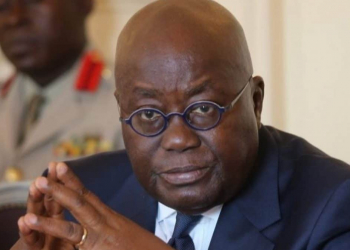Availability and ease of access to credit remains a huge challenge for the private sector. Latest data from the Bank of Ghana suggests a general credit squeeze to the private sector in 2016, amidst a chequered month-on-month growth when compared to the numbers recorded in the same period the previous year.
The data indicate that the figure also equals an average of 15.6 per cent of the total value of goods and services produced in the country, also known as Gross Domestic Product (GDP), at the end of July.
Total loan book of the banks was GH¢32.1 billion as at end of July 2016, thus, only seven per cent increase from the 2015 exit, according to the summary of economic statistics report released by the Bank of Ghana (BoG) in Accra.
The BoG report showed that the nominal loans and advances to the private sector stood at GH¢28.1 billion at the end of July 2016, representing just seven per cent increase over the year 2015.
An investment banker and management accountant, Mr Kwesi Livingstone, clearly sees a credit squeeze to the private sector, which beginning he traced to 2015. “The worse hit is the manufacturing sector that had a significant reduction of approximately 50 per cent from GH¢1.4 billion in 2014 to GH¢735 million (PwC Banking Survey, 2016).”
The BoG data also indicates that an increase in customer deposits from an average of GH¢40.2 billion in the first quarter of 2016 to GH¢41.8 billion (4% growth) in the second quarter, 2016, resulted in marginal increase in loans to the private sector, albeit at a higher lending rate.
The reluctance of banks to grant credit to the manufacturing sector, he observed, was precipitated mainly by the energy crisis. “This continued through quarter one, 2016. Thus, the total loan book of banks remained stable at GH¢30.2 billion per month for quarter one, while the loan book to the private sector was fairly stable at an average of GH¢26.01 billion.”
The average lending rate of banks increased by 350 basis points from 28.6 per cent to 32.1 per cent from March to April 2016, which also gave rise to Non Perterming Loans (NPL) from an average of 15 per cent in quarter one to 19 per cent in quarter two.
“The sharp increase in NPL resulted in the banks resorting to lazy banking by investing in government bills (risk free assets) rather than loans (risky assets). This further deepened the excess of demand for credit by the private sector over the supply of credit by the banks,” Mr Livingstone, who is a co-founder of McOttley Holdings and the current Managing Director of REAP Green Technologies, stated.
Bank’s credit to the private sector, which is important for keeping production running, and, therefore, job creation, started the year at GH¢26.1 billion, representing a 24.7 per cent growth over the same period last year. It reached GH¢28.3 billion in June this year, but reflected only 8.5 per cent growth over the same period last year, before settling at GH¢28.1 billion at the end of July this year, representing 16 per cent over what was recorded for the same period last year.
The report was released ahead of the Monetary Policy Committee (MPC) meeting on September 19, which maintained the policy rate at 26 per cent, after reviewing the economy for the last quarter.
Deposits kept within the banking system for the seven months was in the average of GH¢41 billion, with July settling for GH¢42.2 billion, a year-on-year growth of 23.7 per cent.
While the banks kept capital adequacy ratio at about 16.7 per cent for July, total assets of the banks increased from GH¢66.1 billion in January 2016 to GH¢67 billion in July 2016, NPLs ame up to 19.1 per cent on the loans book of banks, at the end of July.
On the government operations, total government revenues and grants were 9.4 per cent of GDP, as against a total expenditure of 12.5 per cent of GDP. This yielded a domestic primary deficit of 0.3 per cent, which means that the government still had to contain spending more that it received within the domestic economy.
Government operations recorded a 0.6 and 0.5 per cent domestic primary deficit for April and May respectively. The overall balance on cash basis yielded a deficit of 3.1 per cent.
The public debt inched up to US$27.8 billion in July from US$27.4 billion in May 2016. In cedi terms, the debt increased to GH¢109.8 billion in July, up from GH¢108.6 billion in June, on the back of domestic bonds and government treasury issue.
The investment banker and management accountant advised that while policy makers worked on availability of credit to the private sector, a critical consideration should be given to the cost of credit because that had direct impact on the cost of goods and services, hence high prices and increase in inflation.
Another investment banker, Nana Kwame Oteng-Gyasi, said credit to the private sector, which started the year at GH¢26.1 billion in January and closed at GH¢28.1 billion in July, recorded only marginal growth during the period.
Given that the NPLs which were also moving up could mean less fresh capital being injected into the private sector, but rather as a result of refinancing of old and existing debts as they fell due.
“Though credit to the private sector may seem to be growing marginally, it may not be for actual financing. If you look at the banking sector, the NPLs are high and if I were in the bank, I may not like to give new loans,” Nana Oteng-Gyasi, once an investment banker with JP Morgan and Databank, said.
Currently, the Marketing and Business Development Manager of Tropical Cable and Conductor Ltd, Nana Oteng-Gyasi also traces the rising NPLs to a hazy macroeconomic environment, compounded by new tax measures and rising government borrowing which competes with the private sector for credit, saying that could further stifle growth in the economy.
“The IMF is also being strict on public expenditure. Therefore, the portion of money that the private sector will get would slow down, given that the government is the biggest spender,” Nana Oteng-Gyasi said.
Sign up for Ghana Star News to receive daily email alerts of breaking news in Ghana. GhanaStar.com is your source for all Ghana News. Get the latest Ghana news, breaking news, sports, politics, entertainment and more about Ghana, Africa and beyond.


